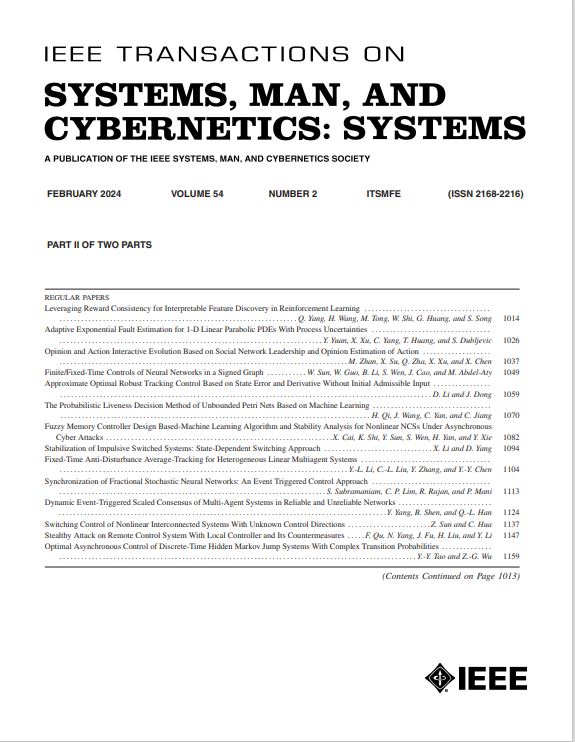Curve-Suppression-Based Event-Triggered Mechanisms for Quasi-Synchronization of Fuzzy Delayed Neural Networks on Time Scales
IF 8.6
1区 计算机科学
Q1 AUTOMATION & CONTROL SYSTEMS
IEEE Transactions on Systems Man Cybernetics-Systems
Pub Date : 2025-02-24
DOI:10.1109/TSMC.2025.3540092
引用次数: 0
Abstract
The vast majority of published event-triggered mechanisms (ETMs) are constructed based on measurement errors, which introduces a problem naturally that they are updated when the measurement errors exceed the thresholds although the current obtained sampling states can make systems converge well. With this problem in mind, we redesign ETMs for quasi-synchronization of T-S fuzzy neural networks (FNNs) with time delays on time scales. First, a novel ETM is designed for continuous-time FNNs with time-varying delays to achieve quasi-synchronization, with which synchronization errors is suppressed to globally exponentially converge to a ball. Second, we introduce the ETM for continuous-time FNNs to discrete-time FNNs, owing to the existence of discrete-time states, the Lypunov function of synchronization errors run over the exponentially decay curve, but it can be suppressed to evolve under another exponentially decay curve. Third, for FNNs on time scales with constant and time-varying delays, we estimate the forward jump operator of the Lyapunov functions and design ETMs to guarantee that the Lypunov functions evolve under the exponentially decay curves, so quasi-synchronization can be achieved. Last but not least, we prove that Zeno behavior will not happen and four numerical examples are introduced to verify the validity and the superiority of the proposed ETMs in reducing information transmission.求助全文
约1分钟内获得全文
求助全文
来源期刊

IEEE Transactions on Systems Man Cybernetics-Systems
AUTOMATION & CONTROL SYSTEMS-COMPUTER SCIENCE, CYBERNETICS
CiteScore
18.50
自引率
11.50%
发文量
812
审稿时长
6 months
期刊介绍:
The IEEE Transactions on Systems, Man, and Cybernetics: Systems encompasses the fields of systems engineering, covering issue formulation, analysis, and modeling throughout the systems engineering lifecycle phases. It addresses decision-making, issue interpretation, systems management, processes, and various methods such as optimization, modeling, and simulation in the development and deployment of large systems.
 求助内容:
求助内容: 应助结果提醒方式:
应助结果提醒方式:


